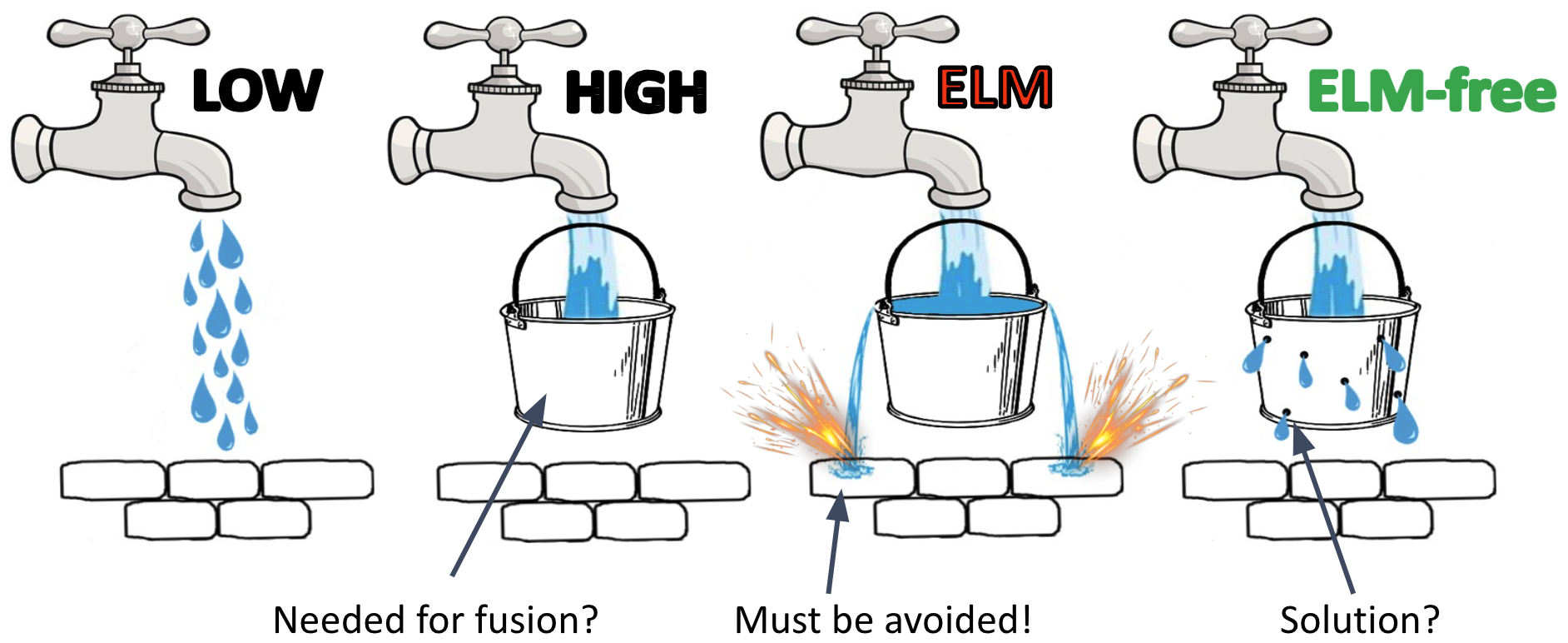The H-mode pedestal is an emergent phenomenon that occurs in tokamaks when the heating power is raised above a certain threshold. To first order it acts like a bucket, preventing fusion-relevant core plasmas from leaving the confined region. However, much like a bucket will eventually overflow if it continues to be filled, the H-mode pedestal will eventually reach an explosive instability limit. At this point, edge localized modes (ELMs) are destabilized, connecting the hot core plasma to the machine walls. In future devices, ELMs will carry enough energy to seriously damage plasma-facing components and must thus be entirely eliminated.
 Left to right: Metaphors for low-confinement mode, high-confinement mode, ELM events and ELM-free operation.
Left to right: Metaphors for low-confinement mode, high-confinement mode, ELM events and ELM-free operation.
Intrinsically non-ELMing enhanced confinement regimes that exhibit steady operation can provide a path to high fusion performance without the detrimental impact of ELMs. These regimes are typically characterized by some sort of enhanced transport (holes in the H-mode bucket) that allows plasma to continuously flow out from the core, preventing the build up of ELM-unstable gradients in the pedestal. To better understand these regimes, we are coordinating analysis and simulation of experiments in multiple intrinsically non-ELMing regimes on several tokamaks around the world.
Recent work on the negative triangularity (NT) configuration suggests has revealed an avenue to achieve high core confinement without ever establishing an H-mode pedestal, sidestepping the issue of ELMs entirely. This promising regime is still relatively new and deserves extensive attention in the coming years.
Selected publications on this subject:
The 2022 U.S. Joint Research Target Report on Intrinsically non-ELMing Regimes will be available soon. Stay tuned!
Robust avoidance of edge-localized modes alongside gradient formation in the negative triangularity tokamak edge
Nelson, A. O., Schmitz, L., Paz-Soldan, C., Thome, K. E., Cote, T. B., Leuthold, N., Scotti, F., Austin, M. E., Hyatt, A. & Osborne, T., Physical Review Letters, 131, 195101 (2023).